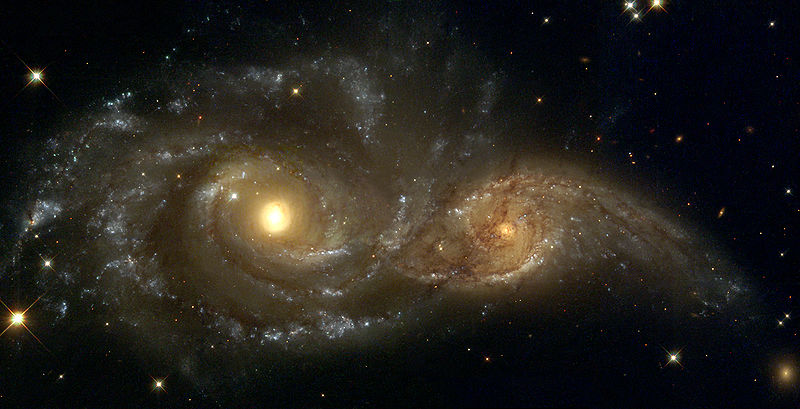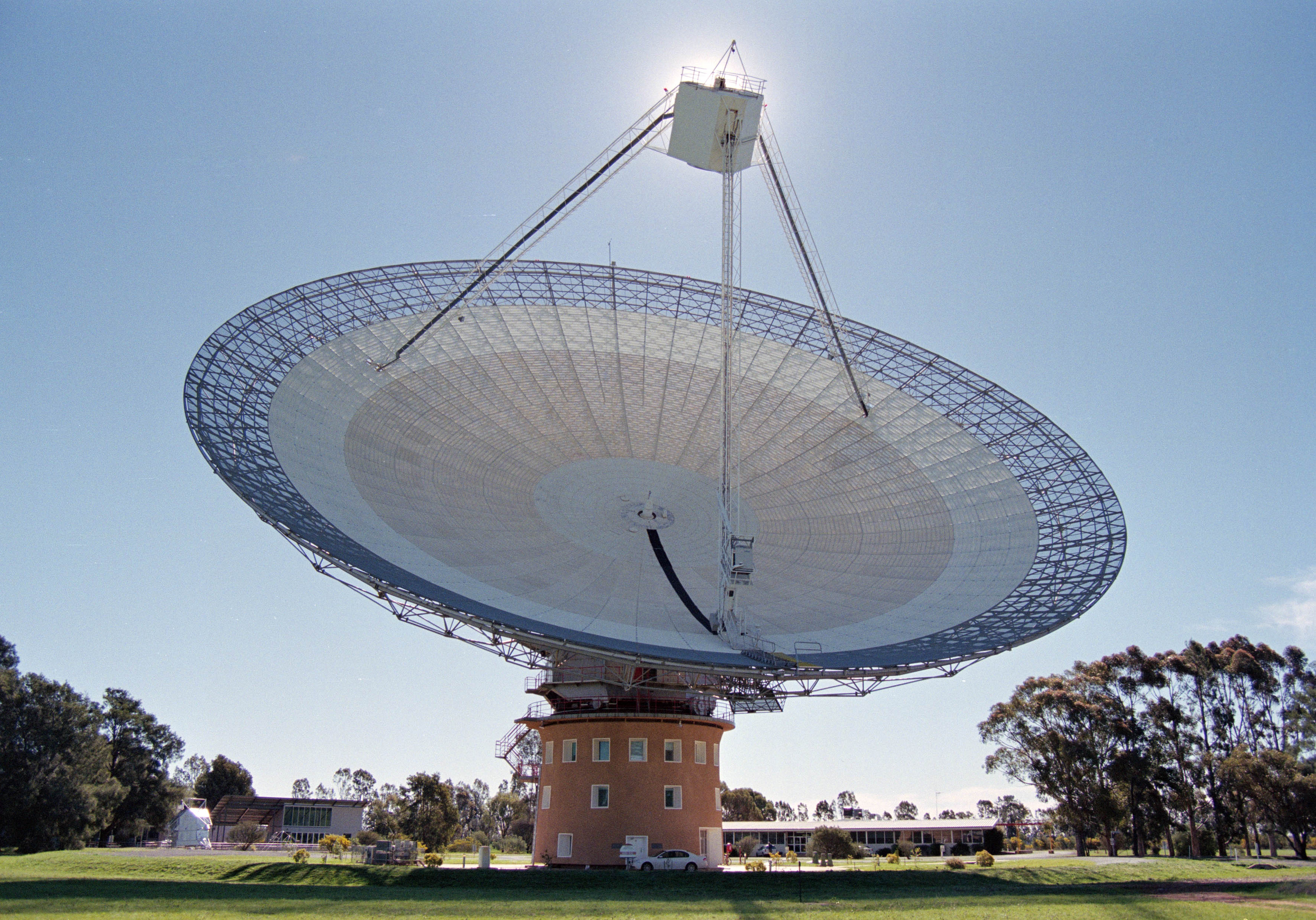Gravitational waves haven’t even been detected yet, and they’re already kicking goals.
In a paper in the journal Science today, a team led by scientists from CSIRO and the University of Melbourne has tested models (ideas) of how supermassive black holes, and the galaxies that host them, grow over time.
And they’ve done it with information about gravitational waves — a limit on the strength of those waves.
This is the first time anything we know about gravitational waves has been used to test ideas in astrophysics.
When galaxies merge, their central black holes will eventually meet and orbit each other, generating gravitational waves. (Galaxies NGC 2207 and IC 21634. Credit: NASA, ESA and the Hubble Heritage Team (STScI))
Gravitational waves* are ripples in spacetime itself, predicted by Einstein.
We have good indirect evidence that they exist, but they haven’t been directly detected — although there are now many people trying to do so.
Extremely massive black holes orbiting each other would generate gravitational waves.
The Parkes telescope is being used to look for the effects that such waves would have on the small stars called pulsars.
The longer this experiment runs, the more sensitive it becomes to weak effects.
The Parkes telescope: hunting for gravitational waves. (Photo: John Sarkissian)
The researchers using Parkes haven’t yet detected gravitational waves. But they can say how weak the waves are. That is, if the waves were any stronger, they would have detected them by now.
This information has let the scientists test four competing models (ideas) of how supermassive black holes, and the galaxies they live in, grow and develop.
One model is now ruled out and the other three may need to be modified.
And that’s how science progresses: by putting innocent models’ feet to the fire. Ruthless, eh?
—
*Why do we say “gravitational waves” and not “gravity waves”? Because scientists who study the atmosphere nabbed that term first.
Publication
R. M. Shannon, V. Ravi, W. A. Coles, G. Hobbs, M. J. Keith, R. N. Manchester, J. S. B. Wyithe, M. Bailes, N. D. R. Bhat, S. Burke-Spolaor, J. Khoo, Y. Levin, S. Osłowski, J. M. Sarkissian, W. van Straten, J. P. W. Verbiest, J-B. Wang. Gravitational-wave Limits from Pulsar Timing Constrain Supermassive Black Hole Evolution. Science, 18 October 2013.



